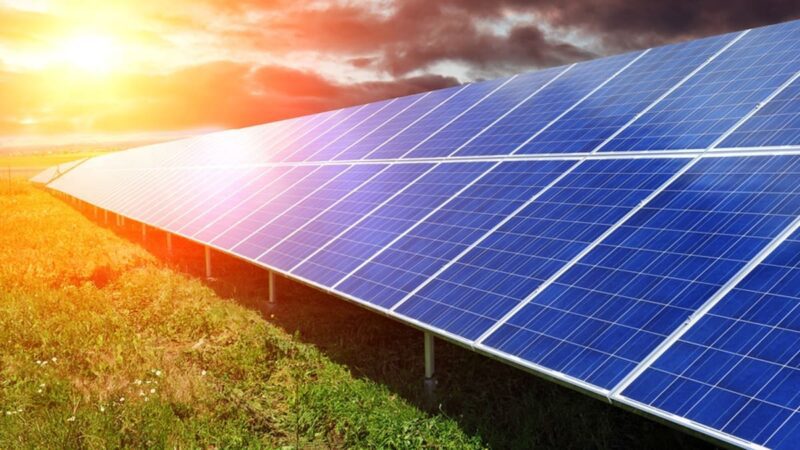Global Issues
Impratical quest for global net-zero emissions -By Kolawole Olaniyi
The current annual production of 1.8 billion tons of steel and 4.5 billion tons of cement used to make concrete for bridges, tunnels, dams, runways, roads and ports will be grossly insufficient for global demand, strongly asserting that net-zero emissions in 2050 is just wishful thinking and should be taken with a pinch of salt.

Advocating for a sustainable and ecologically friendly environment is one of the noble goals that should be backed by all and sundry; it should enjoy global support just as extreme poverty elimination, nuclear disarmament, solving malnutrition and job losses. It is, nonetheless, important not to let go of reality because disconnecting ambition from reality leads to a dead end.
At the early start of the Russian invasion of Ukraine, the United States Presidential Envoy on Climate, John Kerry, warned of bad consequences for the climate if the war tarries for long. His reasons for saying that are plausible; it could lead to the rejuvenation of business-as-usual (re-commissioning moribund coal plants for use) in the event that alternatives to Russian gas are sought, thereby, making it difficult to stay within the preferable less than 1.5℃ temperature rise. But can the world really double down on mitigation measures and stay within the Paris Agreement temperature threshold which, according to the Working Group III Sixth Assessment Report of the IPCC, will require global emissions to peak in three years? Affirming faith in the possibility of such a task is to believe in a tooth fairy due to climate finance, nuclear power demonisation and irreplaceable fossil fuel derivatives and products.
Every roadmap or policy requires a key instrument of finance and in the case of energy transitioning, finance plays an indispensable role. A report by McKinsey & Company has projected that transition to climate neutrality will cost the world $275 trillion by 2050; it will gulp 5% of Europe’s gross domestic product because of the already undertaken measures of transitioning, 9.8% for India and 18% for Russia and other Commonwealth Independent States.
Africa, even though its current greenhouse gas emissions is the lowest, net-zero emissions target is inclusive of the continent because it remains one of the few regions in the world experiencing rapidly growing population and urbanisation. Therefore, the continent is a huge potential contribution to emissions as it works toward energy and extreme poverty elimination.
Sadly, financing green transitioning is much worse for Africa because it will need to invest 1.5 times more than advanced economies in GDP today. Absent international funding and support, the continent cannot afford decarbonisation costs. This is clearly spelt in the Nationally Determined Contributions of its four biggest economies. In Nigeria’s updated NDC, its proposed unconditional contribution—what it could implement with its resources and capabilities—will reduce emissions by 20% below Business-As-Usual by 2030 while conditional contribution, premised solely on international funding, will result in 47% emissions reduction. $24 billion out of the $50 billion needed by Morocco to reduce GHG emissions by 42% below BAU by 2030 is contingent on international support made available through new climate finance mechanisms.
Egypt’s intended NDC requires sustainable international support through financial flows for its estimated $73 billion cost of reducing GHG emissions between 2020 and 2030, while South Africa’s $64 billion spending plan on energy transition between 2020 and 2030 will require international cooperation and support.
Both targets—conditional and unconditional emissions reductions—are already hitting a stone wall. COVID-19 has negatively impacted the global economy, most especially the African economies, as evidenced by rising unemployment rate, high government debt and GDP contraction thereby creating a disincentive for international climate support.
The African Development Bank/Climate Investment Fund 2021 report on financing change in Africa stated unambiguously that only one loan was extended to a small and medium enterprise in Nigeria while other funds supposed to go into renewable energy/energy efficiency projects were cancelled due to currency fluctuation problem. Therefore, while African governments are already caught between recovering the many years of economic gains wiped off by the pandemic and making green transitioning costs, macro-economic instabilities exacerbated by the pandemic may widen the current $200 billion Sustainable Development Goals financing gap on the continent.
Nuclear power demonisation: The fact that the growing energy demands of the world cannot be met with intermittent renewable technology is to state the obvious. Solar panels and wind turbines rely on energy storage technologies to account for their unreliability. But can batteries really fill the intermittency void? Just to get a sense of proportion, Europe consumes about 7.5GWh electricity in one minute but has battery storage of 10.2GWh; this means that in the event of wind and solar producing no electricity, energy storage can supply power for 1 minute 21 seconds. And continuing on current trajectory investment on batteries, energy storage capacity of Europe will only be able to provide electricity for 11 minutes 45 seconds by 2030.
One of the inevitable energy technologies that can help meet net-zero emissions deadline is nuclear power; a low-carbon, base-load with high capacity factor. Sadly, it’s been demonised, courtesy of various environmental groups and anti-nuclear organisations whose nuclear phobia is premised on past three nuclear accidents (Chernobyl, 3 mile island and Fukushima). Despite the fact that all energy forms have their trade-offs and none is accident-proof, public hate against nuclear power isn’t waning anytime soon. Many environmental cum anti-nuclear organisations expressed opposition on May 16, 2022 to the Californian governor’s statement about the possibility of extending the lifecycle of the last operating nuclear power plant in the state. The governor had raised such a possibility because of the importance of energy reliability that solar panels and wind turbines won’t provide in the face of extended weather conditions such as extreme heat waves, cold waves, drought and wildfires.
Closing down nuclear power plants and replacing them with gas plants amounts to re-carbonisation, which is antithetical to green transitioning. When the 2.2GW San Onofre Nuclear Generating Station, located south of San Clemente, California, was shut down in 2013, it was replaced with 1.8GW natural-gas-fired power plant and 250MW energy storage projects. As of November 2021, there were 23 shut down commercial nuclear power reactors at 19 sites in various stages of decommissioning according to the US Nuclear Regulatory Commission.
Despite scientific analysis revealing that nuclear power has saved more than 1.8 million lives by displacing air-polluting fossil fuels, it continues to witness a sharp decline in use globally. Not even the European Union’s admission that nuclear must be a big part of the continent’s energy mix as a means of facilitation towards a predominantly renewable-based future could stop the December 31, 2021 shut-down of three of Germany’s final six nuclear power plants. The other three remaining units would be closed by 2022 but the country will ridiculously phase out coal plants by 2030, eight years after retiring the final nuclear plants. The country’s energiewendie policies have cost €550 billion by 2015 and its premature shutting down of nuclear plants and their subsequent replacement with fossil powered plants has increased GHG emissions. To be an anti-nuclear activist is to unknowingly advocate for continual fossil fuel usage.
Irreplaceable fossil fuel derivatives and products: The 180 million tons of ammonia the world currently produces help in making synthetic fertilizers that feed nearly half of the world’s population. Because plants cannot use nitrogen in its inert form, the Haber Bosch process has helped us to make ammonium-based fertiliser by combining the nitrogen with hydrogen predominantly produced from Methane. Not only has it helped to feed the world but it has also been found to be advantageous in increasing crop yields and decreasing land use. Green hydrogen only accounts for 2% of global hydrogen production; it cannot replace the 76% global hydrogen production from methane and the 22% produced through coal gasification anytime soon.
Plastics, which are derived from natural, organic materials such as cellulose, coal, natural gas and crude oil, are cut across every sector and their annual production of 400 million tons is found useful in health, building, textile, consumer products and industrial machinery. They currently have no realistic substitute, ditto steel and cement, which depend on the burning of fossil fuels for their production. As developing economies continue on the fast pace of urbanisation, building lasting infrastructures and overhauling ramshackle social amenities becomes inevitable. The current annual production of 1.8 billion tons of steel and 4.5 billion tons of cement used to make concrete for bridges, tunnels, dams, runways, roads and ports will be grossly insufficient for global demand, strongly asserting that net-zero emissions in 2050 is just wishful thinking and should be taken with a pinch of salt.
Olaniyi writes from Lagos via olaniyi.kolawole7@gmail.com



















